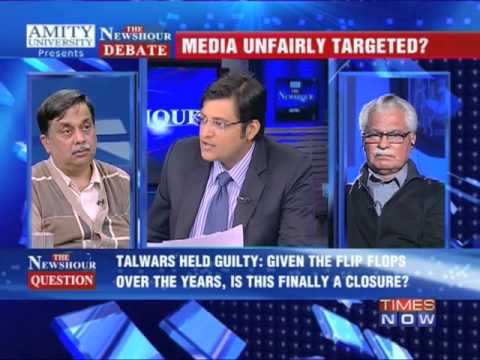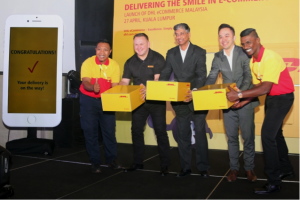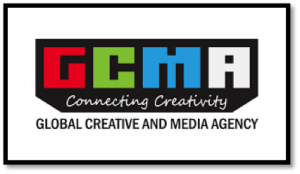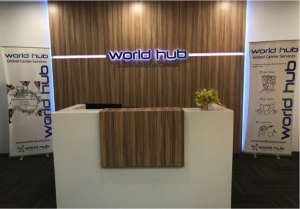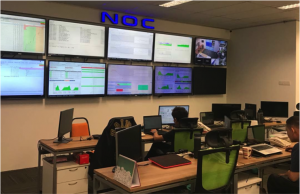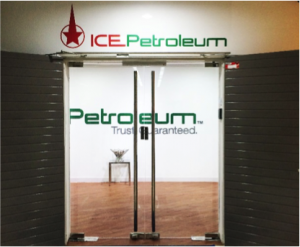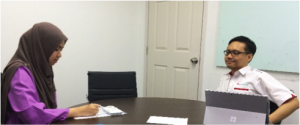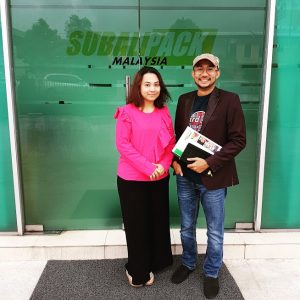by Wan Allef Elfi Danial bin Wan Sukeri
Lights. Gone. Before. Time. This is not the actual acronym for LGBT (Lesbian, Gay, Bisexual and Transsexual) but rather an interesting analogy that perfectly describes the LGBT youth in Malaysia. The LGBT community is often considered as the scourge of the society due its members’ lifestyle, which was perceived as immoral and unnatural. Malaysia is notorious for its ban on homosexuality in which any sexual acts involving same sex individuals are heavily frowned upon and in some cases, punishable by law. A popular case involving the public caning of two lesbians who were caught committing sexual acts in a car (Lamb, 2018) is a distinguishable example. But rather than dwelling on the past, I would like to talk about the present and future concerning the LGBT youth in Malaysia.
From showing signs of conflicting qualities, such as men femininity or women masculinity to dressing up differently from the norms of fashion, Malaysian LGBT youths are constantly under attack in Malaysia. However, a study titled How Race and Religion Shape Millennial Attitudes on Sexual and Reproductive Health conducted by Dan Cox and Robert P. Jones from the Public Religion Research Institute indicated that millennials are more accepting towards homosexuality compared with the people of the previous generation (Felicetti, 2015). Furthermore, they also find it difficult to express themselves within a safe space. Even posting any LGBT-related matters on social media platforms warrants them full-fledged discrimination and hatred from society. This fear is the main reason of why many people from the LGBT community are discreet on their sexuality and refuse to further showcase their talents and abilities to the world. Without a proper platform and support from the society, LGBT youth will fade into the background, their talents grow unpolished and their confidence turned nil. Eventually, the spark that once resides in them will grow weaker, as well and their dreams become forgotten.
It is depressing to know that Malaysia is oblivious from the creativity, achievements and amazing ideas that can be produced by the LGBT youth. LGBT youth can never find the opportunity to shine and display their talents properly. The LGBT community in Malaysia should come together and strive for the similar purpose and goals, not fighting for the rights that obviously go beyond the tolerance of religion, such as same-sex marriage and gender change, but instead for the protection against being discriminated, bullied and abused. Hopefully, the future generation is inspired to open their eyes and mind to see the suffering and torment faced by the LGBT community whilst providing protection to them when needed. Empathy is a treasure that needs to be nurtured within the younger generation. Aside from that, I also hope that young LGBT representatives are given a fair and equal chance to be featured in various fields, such as entertainment, economy and politics. In my opinion, everyone should have the same rights to contribute to this blessed land.
It is very crucial to note that the chances of LGBT youth exposed to all types of bullying are fairly high. These bullying activities if not prevented at a young age, can lead to worse repercussions in the future, such as physical abuse and murder. However, it is upsetting to consider a person getting murdered just for loving another person. It is sad and frightening to see people justifying these horrible acts for the sake of preserving Islam sanctity. As days past by and we are inching closer to the year of 2020, the cases of LGBT misfortunes seem to be rising at an alarming rate. In 2018, a video of two men being beaten up by a group of people for allegedly having sex in a car in Kuala Lumpur went viral and caused uproar among the Malaysian society (Adam, 2018). Such similar incidents are likely to occur again if no safety is guaranteed for the LGBT community. Apart from that, this issue can sprout other concerns, such as the increasing cases of LGBT youth affected by mental health risks, often leading to suicidal thoughts and self-harm. A study done by Meyer (2003) showed that stigma, prejudice, and discrimination towards the LGBT community create a hostile and stressful social environment for them that lead to mental health problems. To make things worse, the society seems to be satisfied in pushing them, the LGBT community, to the edge of the cliff.
Islam is a religion of peace and perfection. But the Muslims are not. There have been guidelines and proper methods in handling a phenomenon like this. Unfortunately, some people took matters into their own hands in dealing with homosexuality issues. To many, inflicting pain and abuse upon the LGBT community is a justifiable act. If this behaviour is made into common tradition and hatred is spread, the LGBT youth will face a bleak future. In June 2017, a teenager from Penang was beaten and raped by a gang of young men for having effeminate traits (Thiagarajan, 2017). 18-year-old T. Nhaveen was brutally assaulted and ended up being brain-dead from the various wounds that he sustained on his head, hips and multiple burn marks on his back (Thiagarajan, 2017). Unfortunately, Nhaveen did not survive from the incident and died later on, which led to the case being reclassified as murder (Logeiswary & Sekaran, 2017). Is this the life that the LGBT community has to endure? It seems like being a heterosexual is a privilege.
Furthermore, the Prime Minister of Malaysia has released his statement on LGBT rights in Malaysia by stating that their lifestyle will not be part of the nation’s value system (Pillai, 2018). In order to find solace within the society, LGBT community depends on the millennial’s perception and acceptance towards their rights as those millennials are the future of the country. This is where the upcoming generation, regardless of their sexuality differences, plays a vital part in securing a better future for their homosexual allies. Decades ago, homosexuality topics are considered as a strong taboo and are often refrained from being discussed in households and school settings. Undoubtedly, this has resulted in various repercussions, such as parents of LGBT individuals not knowing the correct way to show support, the society finding it enjoyable to bully effeminate boys, ridiculing masculine girls and many more.
In Western countries, such as the United States, LGBT communities are given rights to be represented in media and entertainment although the appearances are still rather marginal. Some LGBT youth consisting of celebrities are sculpted into icons and followed by millions of fans across the globe. However, this situation is non-existent in Malaysia. This is due to the discrimination woven through decades of fear mongering towards the LGBT community the second their sexuality is revealed. This further pushes the possibilities of LGBT community hiding behind masks and suppressing their skills. Aside from that, a survey conducted by the trend forecasting agency, J. Walter Thompson Innovation Group, young Americans aged 13 to 20 were discovered to be far more open-minded and tolerant than the older millennial groups regarding the issues of gender and sexuality (Zing, 2016). Lastly, the millennials provide their support in increasing government funding towards the prevention and treatment of HIV and AIDS and accept more LGBT immigrants from other countries that criminalize sexuality (Cohen, 2018).
In short, the LGBT community, especially those from the younger generation, should not be hindered from expressing their true self and showcasing their talents, abilities and ideas. Hopefully, Malaysians will learn to be more understanding and accepting towards the LGBT community. This is easier in the current proliferation of media technology. With the help of the Internet, the younger generation nowadays is broadly exposed to differences of race, religion and culture, feminism, gay rights and other pertaining global issues (DiSabito, 2014). Additionally, LGBT youths need to be assured that the future can hold a bright prospect for them. Thus, Malaysians must come together to achieve undisputable harmony and democracy.
References
Adam, M. (28 December, 2018). Malaysian
men beaten up and dragged out of car for ‘having gay sex’. Retrieved 10
January, 2019, from Pink News: https://www.pinknews.co.uk/2018/12/27/malaysian-men-beaten-up-gay-sex/
Cohen, C. J. (10 July, 2018).
Millennials Support LGBT Rights But Take Issue With ‘Homosexuality’. Retrieved
11 January, 2019, from Advocate: https://www.advocate.com/commentary/2018/7/10/millennials-support-lgbt-rights-take-issue-homosexuality
DiSabito, A. (4 March, 2014).
Millennials are making the world a better place. Retrieved 10 January, 2019,
from Daily Collegian:
https://dailycollegian.com/2014/03/millennials-are-making-the-world-a-better-place/
Felicetti, R. (15 April, 2015).
Millennials: More Accepting of Homosexuality? Retrieved 10 January, 2019, from
The Outlook: https://outlook.monmouth.edu/news/30-volume-86-fall-2014-spring-2015/2578-millennials-more-accepting-of-homosexuality
Lamb, K. (2018, September 3). Women
caned in Malaysia for attempting to have lesbian sex. Retrieved from
TheGuardian:
https://www.theguardian.com/world/2018/sep/03/women-caned-in-malaysia-for-attempting-to-have-lesbian-sex
Logeiswary, T., & Sekaran, R. (16
June, 2017). Teen bully victim Nhaveen dies. Retrieved 11 January, 2019, from
The Star:
https://www.thestar.com.my/news/nation/2017/06/16/teen-bully-victim-nhaveen-dies-family-and-friends-fill-hospital-grounds-grieving-and-fuming-over-boy/
Meyer, I. H. (2003). Prejudice, Social
Stress, and Mental Health in Lesbian, Gay, and Bisexual. American Psychological
Association, 674-692.
Pillai, V. (21 September, 2018). No way
we’ll recognise gay rights in Malaysia, says Dr M. Retrieved 20 December, 2018,
from freemalaysiatoday.com:
https://www.freemalaysiatoday.com/category/nation/2018/09/21/no-way-well-recognise-gay-rights-in-malaysia-says-dr-m/
Thiagarajan, T. (2017, June 13).
Teenager from Penang Beaten and Sodomised for Being ‘Effeminate’ Now
Brain-dead. Retrieved from World of Buzz:
https://www.worldofbuzz.com/teenager-penang-beaten-sodomised-effeminate-now-brain-dead/
Zing, T. (10 March, 2016). Teens These
Days Are Queer AF, New Study Says. Retrieved 8 January, 2019, from Broadly: https://broadly.vice.com/en_us/article/kb4dvz/teens-these-days-are-queer-af-new-study-says

